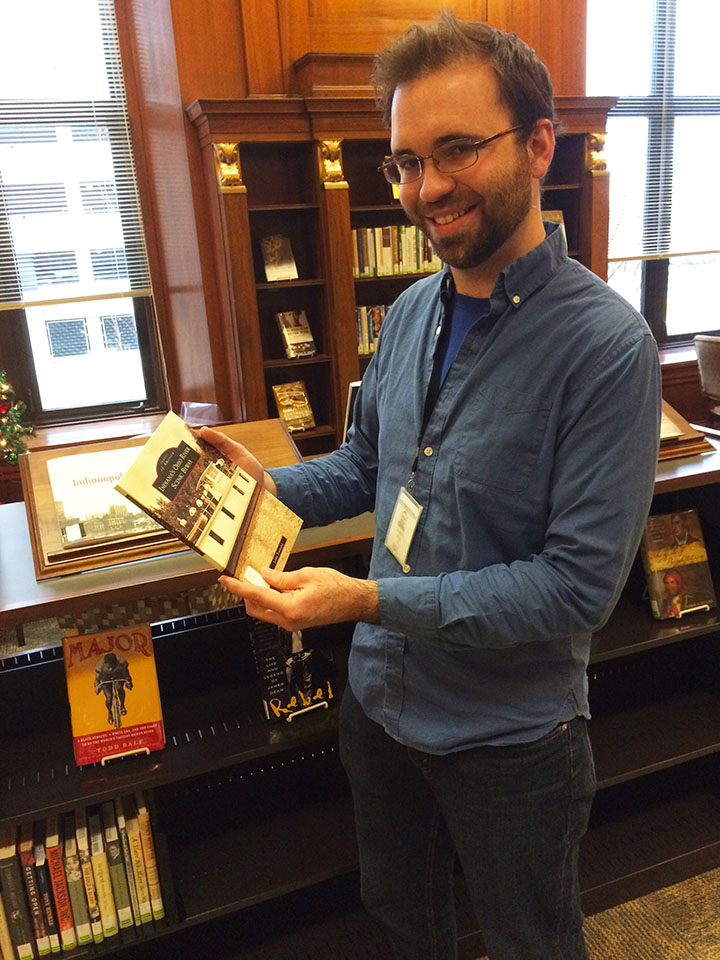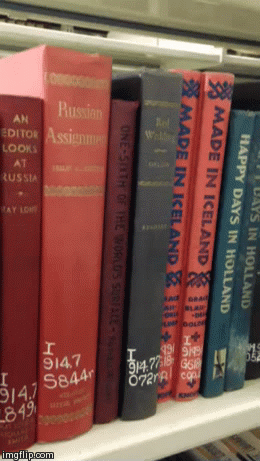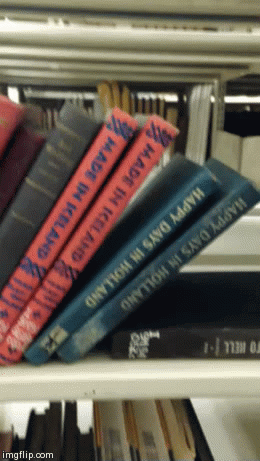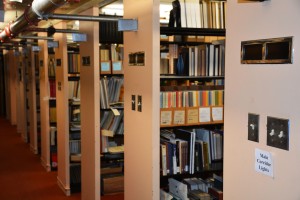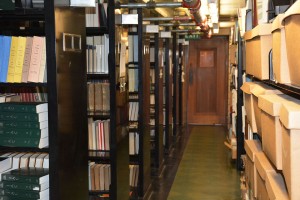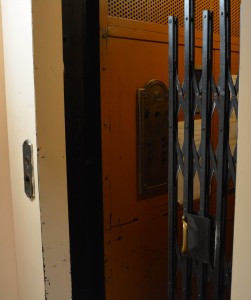It is undeniable that libraries today are devoting increasing amounts of time and resources to building and expanding access to electronic resources. Patrons want this access and libraries have done an admirable job providing it for them. However a fact that often gets lost in the discussion of e-resources is that it limits the ability of institutions to share materials with each other. Interlibrary loan has long been an essential component of library services, allowing libraries to lend items to each other to fulfill patron requests. Such lending worked very well with print materials but due to the licensing restrictions that often are inherent to electronic resources, it is almost impossible for libraries to share digital items. But it is equally impossible for libraries to purchase all the materials that could possibly be requested or needed by their patrons so resource sharing between institutions is still as essential as it has always been. Continue reading
Tag Archives: Books
1,000 Books Before Kindergarten
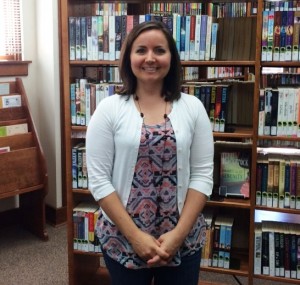 I recently visited with Heather Barron, Director of the Bourbon Public Library. Bourbon Public Library is a lively branch bustling with activities. During the visit, I chatted with Heather about the library and the unique challenges and opportunities of working in a small branch; while talking, I found out about a wonderful program, 1000 books before kindergarten that they are involved with. This program helps to establish reading habits and comprehension for young readers. Continue reading
I recently visited with Heather Barron, Director of the Bourbon Public Library. Bourbon Public Library is a lively branch bustling with activities. During the visit, I chatted with Heather about the library and the unique challenges and opportunities of working in a small branch; while talking, I found out about a wonderful program, 1000 books before kindergarten that they are involved with. This program helps to establish reading habits and comprehension for young readers. Continue reading
An Interview with Sullivan County Public Library Director Jordan Orwig
I recently had the opportunity to visit the Sullivan County Public library and meet new director, Jordan Orwig. He was kind enough to allow me to interview him for the library blog.  Are you from the area? If not, where are you from originally?
Are you from the area? If not, where are you from originally?
Yes, I have lived in Sullivan my entire life except for a short stint as a college student at Indiana University in Bloomington, IN. Living in another town was a great experience, but it was nice to move back home, get involved, and reinvest in the town where I grew up.
When I was a child my parents actually looked into buying the house that currently houses the library administration offices. Obviously they didn’t purchase it, but it seems like one way or another I was always meant to be in it.
What inspired you to work in libraries?
Books and reading have been passions for me for as long as I can remember. After college, I started working at a local newspaper. I was there for a number of years, and then I heard about the possibility of a job opening at the library. After looking into getting my MLS, everything just seemed to click. The Sullivan County Public Library was actually my first employer, too. I worked as a page all through high school, so I think it’s fitting that I get to come back to the same library where I entered the working world.
What is your favorite thing about working for your library?
Besides being surrounded by books every day? I am involved in a number of organizations that serve our community. Working at the library is just one more opportunity that I can utilize to make the county I grew up in a better place. I love the fact that libraries can mean different things to different people. While one person might come in to check out books every week, someone else might only come in once to send in a job application. It’s humbling to consider that the library can help people on many different levels.
What is your favorite book?
Perdido Street Station by China Miéville It was actually assigned to my wife in one of her college courses in 2008. I’d never heard of the guy, but she thought that I’d like it since I was into sci-fi and fantasy, so she gave it to me after the class wrapped up. I fell in love with everything about it immediately. I am not exaggerating when I say that it changed my life and changed how and what I read. Ever since then, I’ve read almost everything he’s written and haven’t shut up about him.
If you could have dinner with any three famous people in recorded history, who would they be and why?
I would be lying if I didn’t include the aforementioned Miéville in that group. I think my answer above should explain why. The other two would have to be Andrew Carnegie and Matthew McConaughey. Carnegie because – come on, this is a library blog, I pretty much have to pick him! In all seriousness though, I’d love to hear his thoughts about his affect on this nation and its libraries. I’d pick McConaughey because of an interview I heard with him on NPR’s Fresh Air program. He’s definitely a guy who knows who he is, where he came from, and what his place is in the world. If you haven’t listened to it, go check it out and I bet you’ll want to meet him, too.
What do you enjoy doing when you’re not at work?
My wife and I are pretty avid bicyclers. We also discovered obstacle course racing this year and have already completed a Tough Mudder, with several other races planned yet this year. They are absolutely insane, fun, and worth trying. I have also played bass in a band with my wife and friend for about two years now. We play country music, but faster and louder than what you usually hear on the radio.
This blog post was written by Amber Painter, Outreach Librarian. For more information, contact the Professional Development Office at (317) 232-3697 or email statewideservices@library.in.gov.
Libraries, Scholarly Journals and Star Wars: A One-on-One with Justin Davis
A One-On-One Conversation with ISL Librarian Justin Davis
By: Ryan Brown
After an extensive tour of the Indiana State Library, Indiana Division Librarian Justin Davis was gracious enough to sit down with me for a brief interview. My mind was blown by the amount of historical items located at the ISL. There were numerous books, newspapers, maps, directories, and photographs positioned throughout the multi-level building. Everywhere I turned, Justin was showing me another item from the collection. I highly recommend that all Hoosiers come and visit the ISL — you will NOT be disappointed. Continue reading
A One-on-One Conversation with Brittany Kropf
I recently had a conversation with our new Rare Books & Manuscripts Librarian Brittany Kropf. Brittany recently started working at the Indiana State Library full-time and was an intern here while she studied at IUPUI in the Master of Library Science program. The following is an excerpt from our interview.
 RB: Please give a brief description of what your job is at the library…
RB: Please give a brief description of what your job is at the library…
BK: I work a lot with the Rare Books and Manuscripts collection, processing and getting them ready for patrons to access. Eventually we will be getting more collections, so I will be working with donors and any events that we need to do. Also, I’ll be helping digitize a lot of our collections. Part of my job is going to be working with the state-wide services side – Indiana Memory – and be the liaison between them and the public services. We will put together work flows and standardized procedures so that we can get materials digitized for the future. Continue reading
Preservation Tips
Preservation for Free!
Preserving collections, whether they are your small collection of family photos and documents or a large library, can seem both daunting and potentially expensive. Yes, hiring a Conservator, purchasing ‘archival’ quality preservation housing materials (like boxes, envelopes, sleeves, and folders), and acquiring all of the equipment necessary for an on-site Conservation Lab are all major investments, but there are also small things everyone can do *for free* to prolong the life of their materials.
Handling
Improper handling of books is a very common cause for damage. Just this week, The Metropolitan Museum of Art published an article on their blog about The Fragility of Headcaps and the Safe Handling of Books. Headcap damage is very common and easily avoidable with good habits. Watch me remove this book the right way:
Also, avoid stacking books too high, carrying too many at once, or attempting to lift a book that is too heavy for your ability, as a lot of damage can occur from a book falling to a floor.
Proper shelving
This is pretty self-explanatory:
While you might think it looks nice or perhaps you were paging books in a hurry, leaning books cause a lot of damage. When the textblock is skewed in this way it will lose its integrity and possibly break into sections. The case (the covers and spine of the book) is also likely to incur damage at the joints, especially if the covering material is an older, fragile cloth or leather.
If you need to store a book on its side, never place the book with the fore-edge down. It is very tempting to do, because then the call number and/or title is more visible, but the weight of the textblock will eventually pull the book away from its covers and/or break or warp the textblock entirely. So even though it is more inconvenient, always store them spine-side downward (or plan to repair your book much sooner and more often).
In addition to the above, always remember to:
- Be considerate to older bindings – Don’t force open a tight binding, and make sure if a book is fragile you give it some extra support to open it safely.
- Always handle with clean hands
- Only write in books if necessary, and only use pencil.
- Do not attempt “treatments” you find online – Sure, there’s a Youtube video showing you how to humidify stuff in a trash can. It looks so easy! But then there’s also this guy:
(Luckily it was a joke, but I’ve certainly seen my fair share of scary “treatments” people think are great that are actually very harmful!)
This blog post was written by Rebecca Shindel, Conservator, Indiana State Library. For more information, contact the Indiana State Library at 317-232-3675 or “Ask-A-Librarian” at http://www.in.gov/library/ask.htm.
New Indiana Humanities book kits added to ISL catalog
Over 270 book kits recently were added to ISL’s online catalog on behalf of the Indiana Humanities Council’s Novel Conversations program. These book kits are provided free-of-charge to libraries and other institutions in the state and are excellent to use as a way to supplement extra copies of a title for your book club or community reads.
Titles range from popular recent releases in both fiction (The Rosie project by Graeme Simison) and non-fiction (Quiet: the power of introverts in a world that can’t stop talking by Susan Cain) to classics (John Steinbeck’s East of Eden) to local interest titles (Where we live: Essays about Indiana) and even graphic novels (Marjane Satrapi’s Persepolis). Depending on the title, these kits provide anywhere from 5-30 regular print copies and many include large print copies and/or audiobook versions of the title.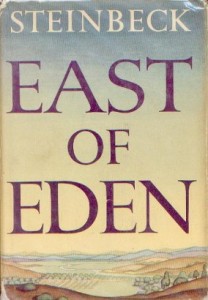 To locate these kits in ISL’s online catalog, visit evergreen.lib.in.us and do a title search for “Humanities kit.” To obtain a kit, follow the directions on the screen and call 1-800-675-8897 ext. 128.
To locate these kits in ISL’s online catalog, visit evergreen.lib.in.us and do a title search for “Humanities kit.” To obtain a kit, follow the directions on the screen and call 1-800-675-8897 ext. 128.
For more information on the Novel Conversations program, please go to http://www.indianahumanities.org/programs/novel-conversations/.
This blog post was written by Jocelyn Lewis, Catalogue Librarian, Indiana State Library. For more information, contact the Indiana State Library at (317)232-3678 or “Ask-A-Librarian” at http://www.in.gov/library/ask.htm.
Where are the Books in a Closed Stack?
The Indiana State Library is primarily a research library. Whether you are looking for United States Congressional hearings, researching the War of 1812, or looking for the latest information on environmental science, the material is probably in the closed stacks.
Like most research libraries, the Library of Congress, Chicago’s Newberry Library, and the William H. Smith Library at the Indiana Historical Society, the books and manuscript material are stored in areas that are not accessible to the public. The State Library and Historical Building first opened in 1934, and it featured the latest construction of the day with the main book stacks divided into seven-stories in this four-story building.
The latest in automatic electric elevators with pushbutton-control were installed, and the stacks were arranged as an integral part of the heating and ventilation system.
As the collections grew and the building was expanded more rooms were added and the new book stacks are now moveable, allowing for even greater use of space.
Whether the material is on open or closed stacks, our skilled librarians are happy to assist both the novice and professional researcher.
This blog post was written by Marcia Caudell, Reference Librarian, Indiana State Library. For more information, contact the Indiana State Library at (317)232-3678 or “Ask-A-Librarian” at http://www.in.gov/library/ask.htm.

